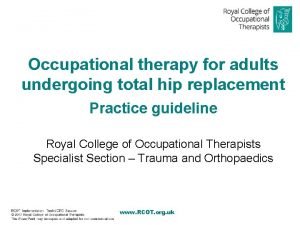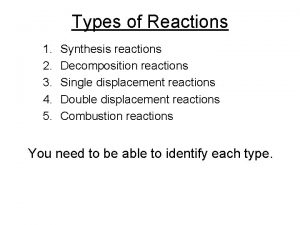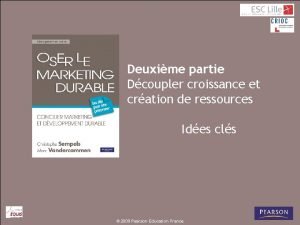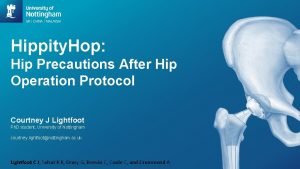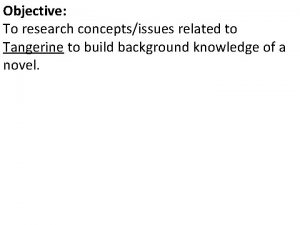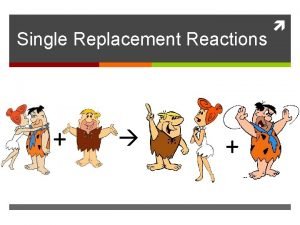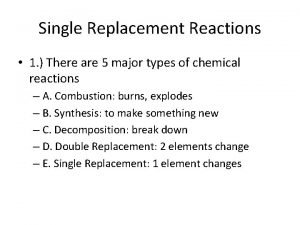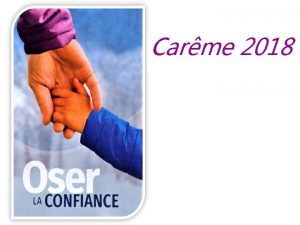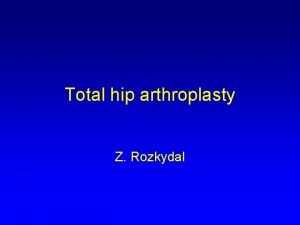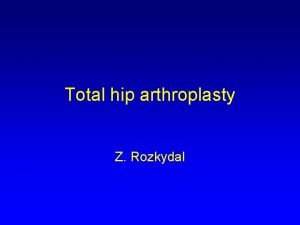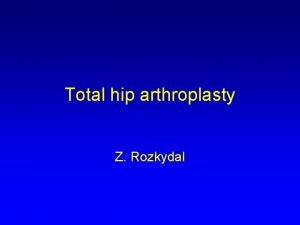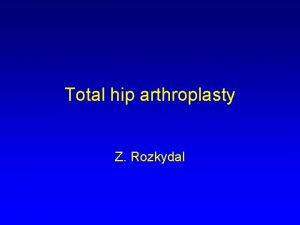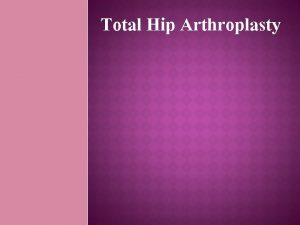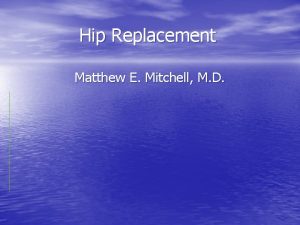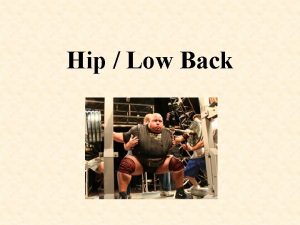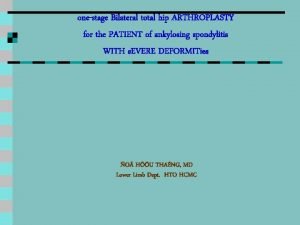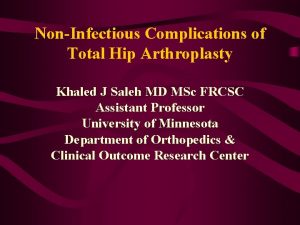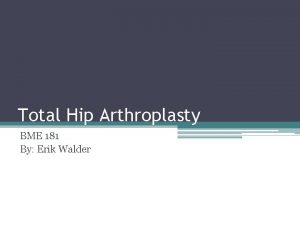Hip Arthroplasty Chris Oser Presentation Why hip replacement






























- Slides: 30

Hip Arthroplasty Chris Oser

Presentation • Why hip replacement? • How? –Surgery! • Different materials • Pros and Cons • Resurfacing • Patient post-op

Reasons for Hip Replacement • • • #1: Osteoarthritis Rheumatoid arthritis Trauma - Injury Osteonecrosis Bone tumors that break down the hip joint.

Who needs a THR • Generally acknowledged indications: – Joint pain – Functional limitation – Radiographic evidence of joint damage

Which hip needs a replacement?

Shortening

Prosthesis • • • Femoral Stem Femoral Neck Femoral Head (Liner) Acetabular Cup




Be-WEAR!!! • Wear leads to failure -Shedding of materials due to friction -Causes: -Irritation -Pain -Decreased Mobility -Joint Failure “Aseptic loosening due to wear debris-induced osteolysis has been identified as the leading cause of late failure in total hip arthroplasty”

Revision • 2 nd Surgery – Not as effective as 1 st -Added cost -Additional down-time and recovery -Loss of faith in procedure

Materials • • Metal-on-Metal-on-Poly Ceramic-on-Ceramic-on-Poly

Metal on Metal - Pros • • Strong! Very low wear properties -10 X Longevity Greater diameter femoral head. Dancers, Athletes, who value an extended mobility and stability. Younger Patients.

Metal on Metal - Cons • Lose ability to affix with screws. • Shedding of metal ions – Cobalt – Chromium Pregnant women or renal impaired, loss of hip bone.

Metal on Poly - Pros • • Most common 10 yrs - 90% functioning well 20 years – 80% Liner replacement • Highly cross-linked poly vs. non. -Decreased wear with cross-linked, even with larger heads. -Aids in decreasing chances of revision Older patients (majority), less bone, trauma pts.

Metal on Poly - Cons • Large amount of particles shed -> osteolysis and aseptic loosening. • Highly cross-linked poly liners: – Cost of being more susceptible to fatigue fracture. Younger patients

Ceramic on Ceramic - Pros • Strongest! Most inflexible surface. • 100 x less wear than Metal on Poly • Aluminum Oxide Ceramic • Same as Metal on Metal. Younger Patients.

Ceramic on Ceramic - Cons • Can become a surgeon’s worst nightmare! -Fracture -Impingement -Ease of revision -Squeaking! Older patients. Those with risky behavior.

Ceramic on Poly - Pros • Many of same properties of Metal on Poly • Decreased wear on Poly liner • Less ceramic on the joint, less to fracture. • Younger patients. Especially younger Women

Ceramic on Poly - Cons • Poly Wear --> Osteolysis • Ceramic fracture. – Less ceramic to fracture, but it still can! • Older patients. Those with risky behavior.

Resurfacing The New Kid on the Block

Resurfacing • New Alternative – Acetabulum and Femoral Head. – Preserves the femoral neck and avoids exposing the femoral canal. – Unsuccessful early with liner use, now all metal – In use for about 10 years. – Usually less than 55. – If not had deformity due to arthritis.

THR Resurfacing

Resurfacing - Pros • Expected high longevity out of them, even in younger patients ~ 30 yrs. • Preserve femoral neck and canal. Critical for success of a revision surgery. • Larger size of the implanted head reduces the risk of dislocation. • More likely than total hip replacement patients to recover a natural gait. • Younger patients, good hip bone strength.

Resurfacing - Cons • Metal on metal articulation: – Ion shedding. – Inability to affix the acetabular head with screws. • Possibility that the femoral neck can break. • Lack of a long-term track record: ~10 years • Longer surgical time and requires somewhat more skill. –Still a learning curve. • Older, Pregnant, Poor Bone Strength.

Outcome • For the majority of people who have hip replacement surgery, the procedure results in: • a decrease in pain • increased mobility • improvements in activities of daily living • improved quality of life. • 92% success rate

THE (rear)END

Post-Op Instructions • • • 3 -4 Day recovery in hospital For atleast 6 weeks, NO: Lifting Twist or squat Extreme movements Cross your legs Lift your knee higher than your hip Sporting activities (golf). Drive Bath – Showers only

Post-Surgical Activities
 Occupational therapy intervention plan for hip arthroplasty
Occupational therapy intervention plan for hip arthroplasty Combustion reaction equation
Combustion reaction equation Hey hey bye bye
Hey hey bye bye Arthroplasty practitioner
Arthroplasty practitioner Cappagh hospital day ward
Cappagh hospital day ward Oser la vie
Oser la vie Oser le marketing durable
Oser le marketing durable Diszkurzus
Diszkurzus Kohlberg erkölcsi fejlődés szakaszai
Kohlberg erkölcsi fejlődés szakaszai Hip hop hip to the hippity
Hip hop hip to the hippity The hip to the hop to the hippity hop
The hip to the hop to the hippity hop Hip hop presentation
Hip hop presentation Dont ask
Dont ask Why did chris williams of st. petersburg like tangerine?
Why did chris williams of st. petersburg like tangerine? Why does carine wish chris had taken buck with him?
Why does carine wish chris had taken buck with him? Fetal lie
Fetal lie 4 maneuvers of leopold
4 maneuvers of leopold 13 reasons why bullying
13 reasons why bullying Why presentation skills training
Why presentation skills training Presentation skills definition
Presentation skills definition Probability tree diagrams
Probability tree diagrams Computer life cycle replacement plan
Computer life cycle replacement plan Unity unet replacement
Unity unet replacement Replacement behaviors for attention seeking
Replacement behaviors for attention seeking Replacement sort
Replacement sort Essential question for pythagorean theorem
Essential question for pythagorean theorem Double replacement reaction cartoon examples
Double replacement reaction cartoon examples Stoichiometry predicting amounts in reactions
Stoichiometry predicting amounts in reactions The equation a + bx ® ax + b is the general equation for a
The equation a + bx ® ax + b is the general equation for a Single replacement definition chemistry
Single replacement definition chemistry Single replacement example
Single replacement example
